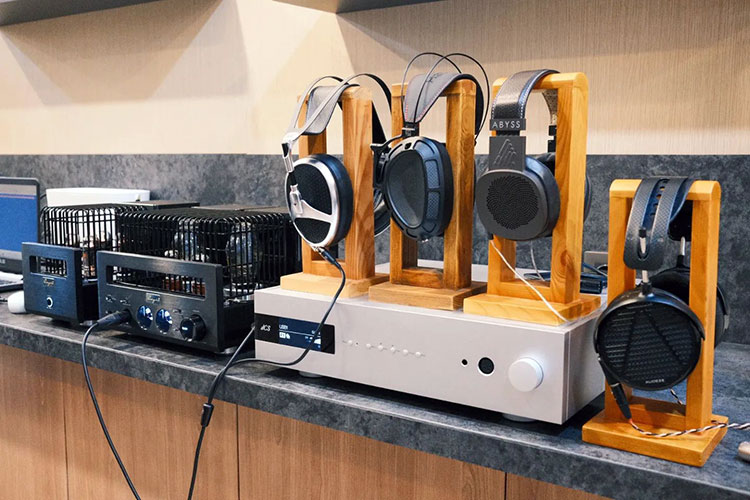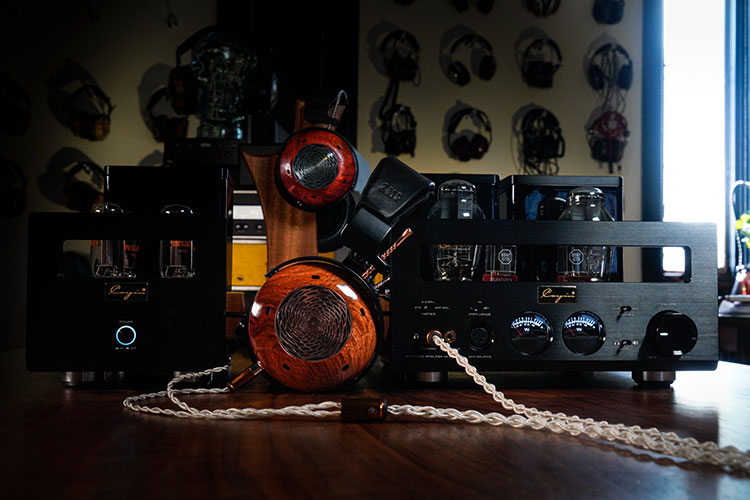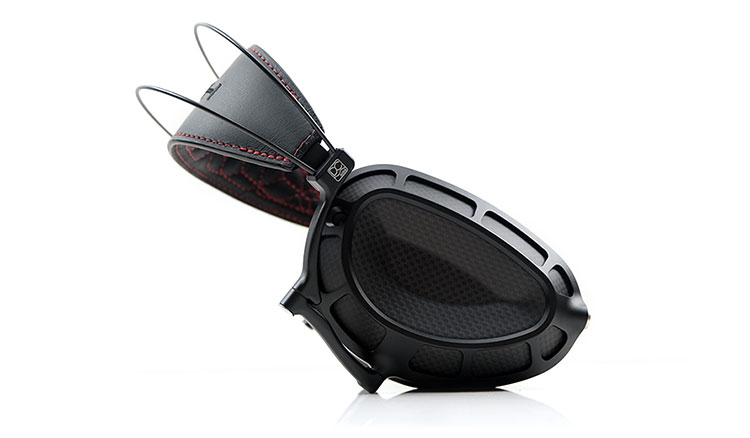Sound Impressions
Summary
If the Envy is the most powerful headphone tube amplifier I have heard to date, the HA-300MK2 is the smoothest and most refined equivalent. This is a ridiculously intoxicating sound signature complete with a hugely impressive holographic staging quality.
This is the type of performance that just draws you right in, never sounding too aggressive nor too light, and with a sweet almost sumptuous overtone for vocal performances that makes almost any headphone an easy and very enjoyable listening experience.
I would caution that that is not an overly romanticized amplifier. There are some lush tones sure but I place the overall delivery closer to natural and clear with some excellent dynamic range rather than a soft or pillowy experience.
The low-end isn’t flabby or saggy by any means but it is not an in-your-face delivery, rather just a shade back sub-100Hz in most headphone pairings but countered by a very pleasing mid-bass punch.
For me, the magic of the HA-300MK2 is in the mids with its euphonic analog timbral coloration and excellent stereo separation, particularly when going balanced. It casts a much wider staging experience compared to more center-focused or neutrally imaged amps such as the Envy and the HA-2SF.
Your source will play a role also but it’s more nuanced than overt. I have my preferences with the R2R Holo Audio Spring 2 DAC reinforcing that pure analog overtone with some beautiful vocal texture from the HA-300MK2 rather than cleaner delta-sigma alternatives.
That being said, sources such as the dCS Bartok or the Little Dot DAC VII might work better if you want to push the low-end a bit more.
Timbre
Even-harmonic biased, euphonic, and with a distinct analog overtone. The HA-300MK2 timbral coloration is classic SET in its purest form making it a very easy but engaging listening experience.
Even with normally mids aggressive headphones such as the LCD-5, it sounds beautifully balanced and smooth sounding. I tend to tread water with some LCD-5 amplifier pairings, anxious not to overly excite that forward upper-mids that can sometimes happen with aggressive solid-state alternatives.
Not here. Vocals are to the fore but sound liquid and sweet in their delivery rather than dense or physical. Higher-pitched percussion shimmers but without any perceived edginess. There is a slightly lighter amount of weight in the note though compared to something like the more robust Envy tuning given the low-end is more relaxed here and not as forceful.
Of course, you will pick up on that signature SET warmth in the instrumental timbre with a trailing decay and very little in the way of manufactured sibilance on the low-end but it’s not cloying in character. The airiness and staging size of the HA-300MK2 ensures individual notes never trip over each other or mask their individual character.
The fundamental is good but not that physical on the low-end. It has similar traits to the Cayin house sound on their smaller scale Class A offerings with an elastic atmospheric bass quality and a satisfying mid-bass punch than an underlying strong rumble.
Staging
This is the area that really grabbed my attention right from the start. I was expecting the beautiful SET coloration but I was not expecting just how holographic and refined the HA-300MK2 staging would be.
Amplifiers such as the Envy have a strong vertical and center focus with excellent depth and vocal robustness. The HA-300MK2 goes in a very different direction pushing everything out wider, stretching the staging from front to back for a very holographic vocal and instrumental imaging experience.
It works beautifully for headphones such as the LCD-5, Atrium, and yes, even the Susvara. The only exception is sheer depth but I can live with that because of the arena light quality of the overall staging performance giving it a very roomy and airy feel.
The headroom is also very good though treble is not forced or hugely forward. The shimmer and sparkle are there but it’s a light touch rather than an aggressive precise introduction. DCA Stealth owners should appreciate this arrangement. This pairing teased out a very natural-sounding vocal presence without upsetting the upper-mids harmonic balance in doing so.

Synergy
Efficiency
For such a big beast, the HA-300MK2 4.4mm output handled IEMs with surprising levels of deftness. For some owners, this will be less about power and too much of it and more about coloration.
I got a lot more wiggle room than I was expecting in terms of volume control, a much blacker background, and almost no hiss, even with sensitive IEMs such as the Andromeda 2020. Less sensitive monitors such as the Empire Ears Odin and the VE Phonix offered even more satisfying levels of volume control.
One thing to note, the stepped potentiometer is less linear with IEMs on the first 3-4 steps. In fact, there is no audio at all from IEMs on the first three steps then it pops in on the 4th, albeit in a very controlled evenly channel-matched manner. From there you can get a further 6-10 steps depending on the efficiency of the IEM before it gets too loud.
Impedance Matters
The impedance switch also is a factor with both IEMs and headphones, (see the driving power section for more impedance-related detail on our tested headphone pairings).
Whilst there is some preference at play for how dynamic you want your performance, I would generally steer you away from the high-level setting for IEMs.
With our 3 tested monitors the overall sound came across as vibrant, forward in nature, but a bit ‘stressed’ sounding. The energy is almost too much to the point where you might get a bit of distortion in the performance. Keeping it low impedance for the Andromeda 2020 sounded much more controllable and accurate to my ear, keeping the highs in check also.
I found the medium impedance setting to be a nice compromise, especially with the Phonix which can sound overly conservative and flat on the low setting. It seems to help tease out a bit more physicality and aggression on the lows to the lower mids injecting a stronger ‘musical’ trait into the Phonix presentation.
Staying on low can help with the very forward upper-mids of the Odin also though I am never that bothered by it personally. Going medium offers a bit more slam in the lows and teases out the lower mids a bit better. Given the HA-300MK2 has a fairly smooth tonal quality, to begin with, the Odin vocals still retain a fairly agreeable harmonic balance.

Driving Power
ZMF Headphones Atrium
The Atrium’s staging expansiveness is fleshed out beautifully with a slightly sweet but relaxed-sounding overtone with the Cayin HA-300MK2. Channel and instrumental separation are also refined with a wide holographic soundstage when combined with Holo Audio Spring 2 DAC. Keeping the impedance level on the high setting also teased out the best dynamic range.
When switching to the HA-300MK2 paired with the Bartok Ring DAC I still get that lateral stretch and spaciousness from the Holo pairing in the staging shape of the Atrium performance but slightly more depth and power is thrown in.
There is also a little more treble decay lingering in the HA-300MK2 paired with the Spring 2 DAC compared to the Bartok pairing which, for me, gives the Atrium a sweeter timbral quality for cymbal and hi-hat strikes.
HIFIMAN Susvara
Susvara owners will have no issues with the balanced outputs of the HA-300MK2. Any concerns here will largely come down to tuning preferences as the dynamic range is very strong as well as being able to impressively fill out the massive soundstage of the headphones.
If anything, the HA-300MK2 stretches out the Susvara staging from left to right better than the Feliks Audio Envy which is more focused on producing excellent depth with a more forward vocal image. You can see where they differ in more detail on page 3 of this review.
Abyss Headphones Diana TC
Headphones such as the new Diana TC from Abyss and Dan Clark Audio’s Stealth are also easily driven by the HA-300MK2 but like the IEM performance, you do have to play around with the impedance setting to get them sounding optimal.
The TC has a very smooth sound signature with the HA-300MK2 with excellent left-right channel separation and staging width. However, going low impedance leaves it a bit flat sounding. Pushing to medium impedance will flesh out the low-end dynamics a bit better and add some needed lower mids physicality.
Dan Clark Audio Stealth
The Dan Clark Audio Stealth seemed an ideal match with the HA-300MK2. I personally preferred the Stealth with the HA-300MK2 compared to the new dCS Lina amplifier.
There is this constant focus on the bass performance with the Stealth from amp users and trying to tease out some slam but in reality, I find the vocals to be the real star of the show.
The Lina was perhaps a bit too aggressive on the lower treble introducing a bit of sharpness whereas the more relaxed and euphonic tuning of the HA-300MK2 brought out a much more pleasing vocal timbre from the Stealth.
Sources
All pairings were tested with a mix of 3 DACs including the Holo Audio Spring 2, the dCS Bartok, and the Chord Electronics Qutest.
Of these 3 DACs, I highly recommend the Spring 2 balanced outputs to properly capture that analog and rich tuning of the HA-300MK2. The vocal texture was just stunning with this pairing and should be a favorite for those who want some of that tube euphony combined with a very ‘roomy’ staging quality.
The dCS Bartok offers a pacier and deeper bass presence to the HA-300MK2 performance with improved dynamics. It veers more to the solid-state side in terms of delivering a cooler harmonic balance to the HA-300MK2 but it is not an analytical-sounding pairing.
The Qutest was the cleanest sounding option but more for the HA-300MK2 SE output since it has no balanced capability. Treble is a bit more energetic with this pairing and like the Bartok, it does well in terms of fleshing out some decent slam. It just lacks a bit of emotion for me with vocal texture being a bit too neutral sounding.



